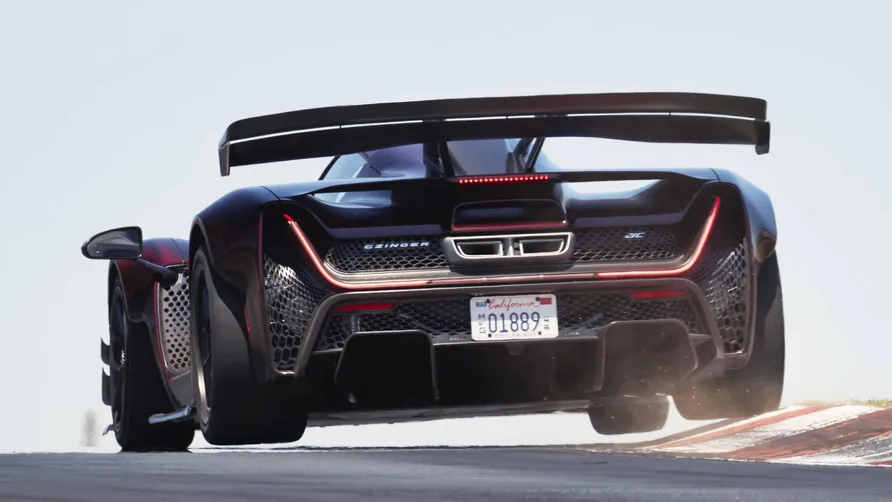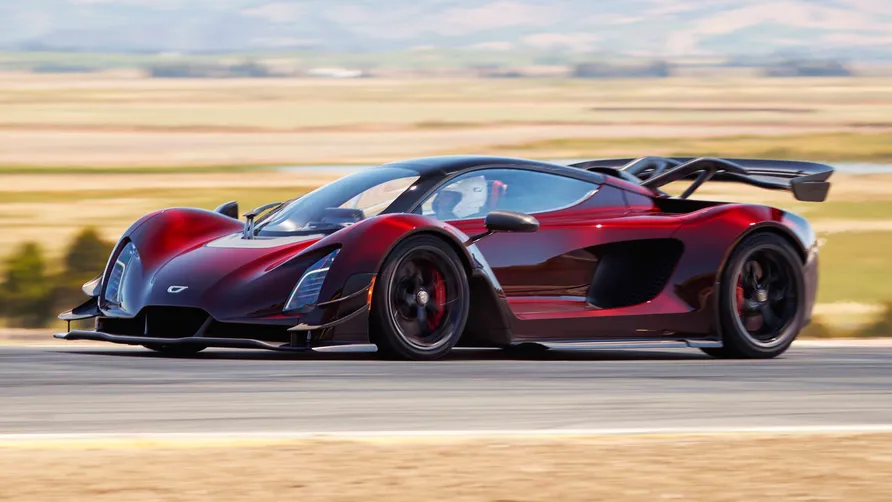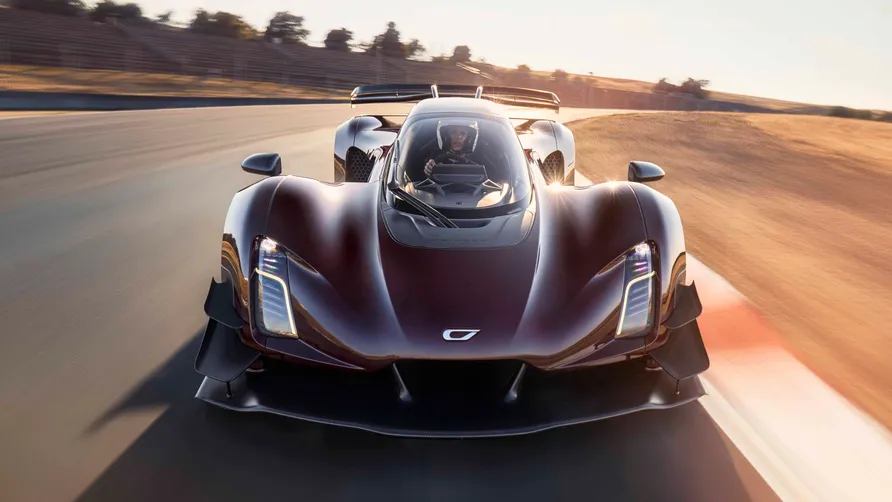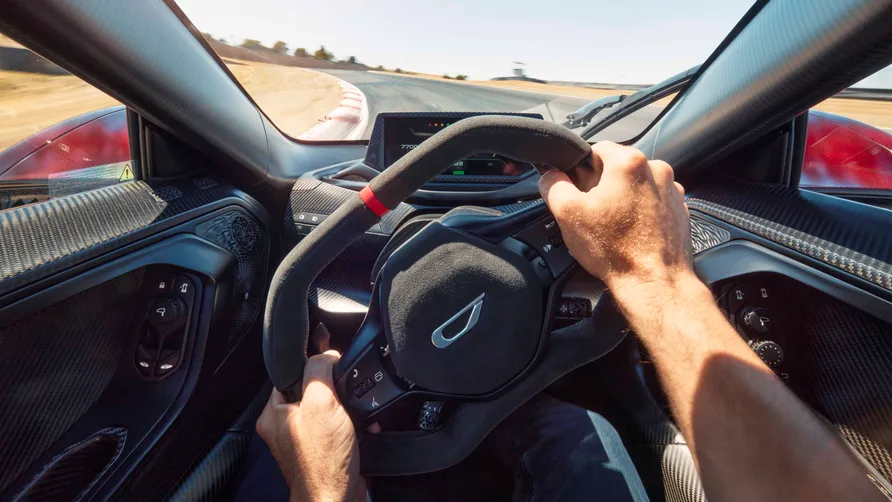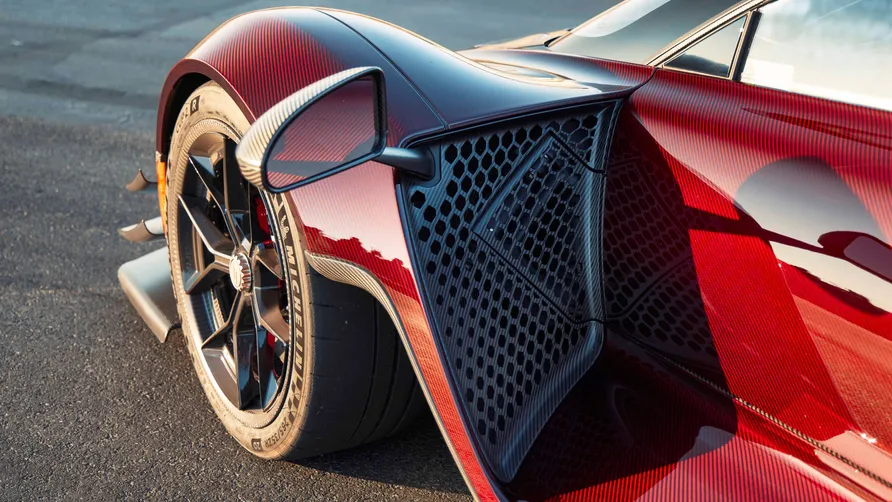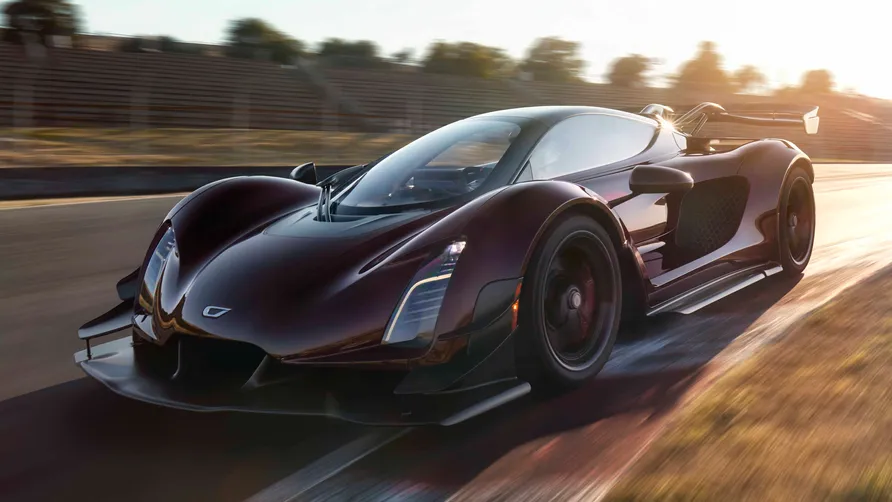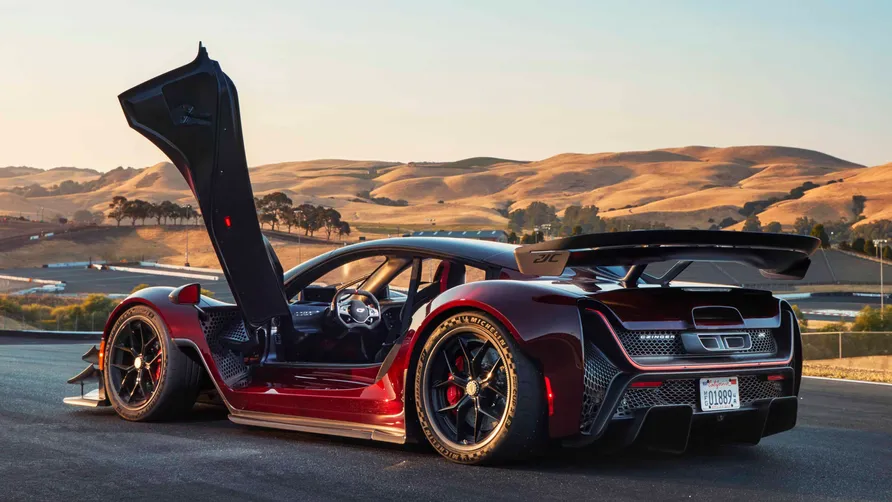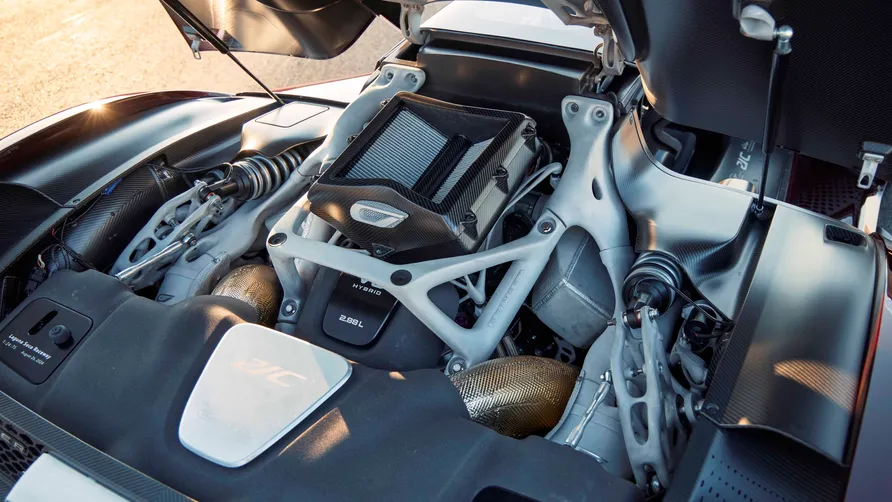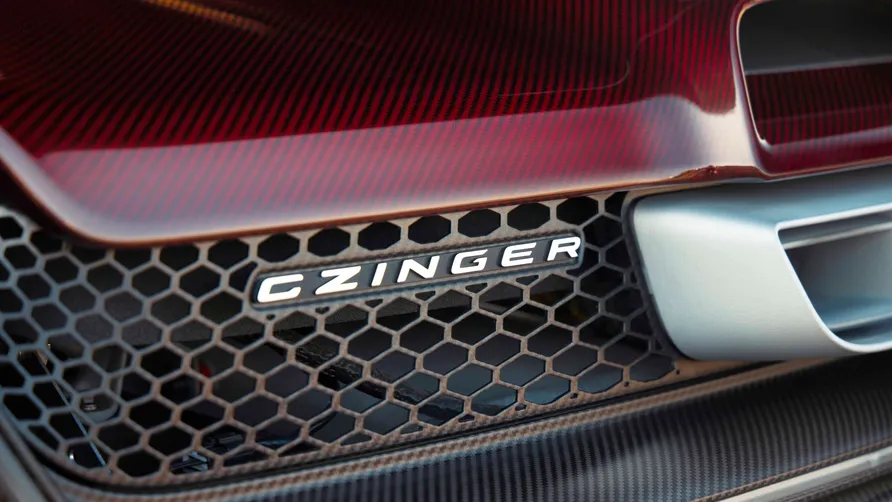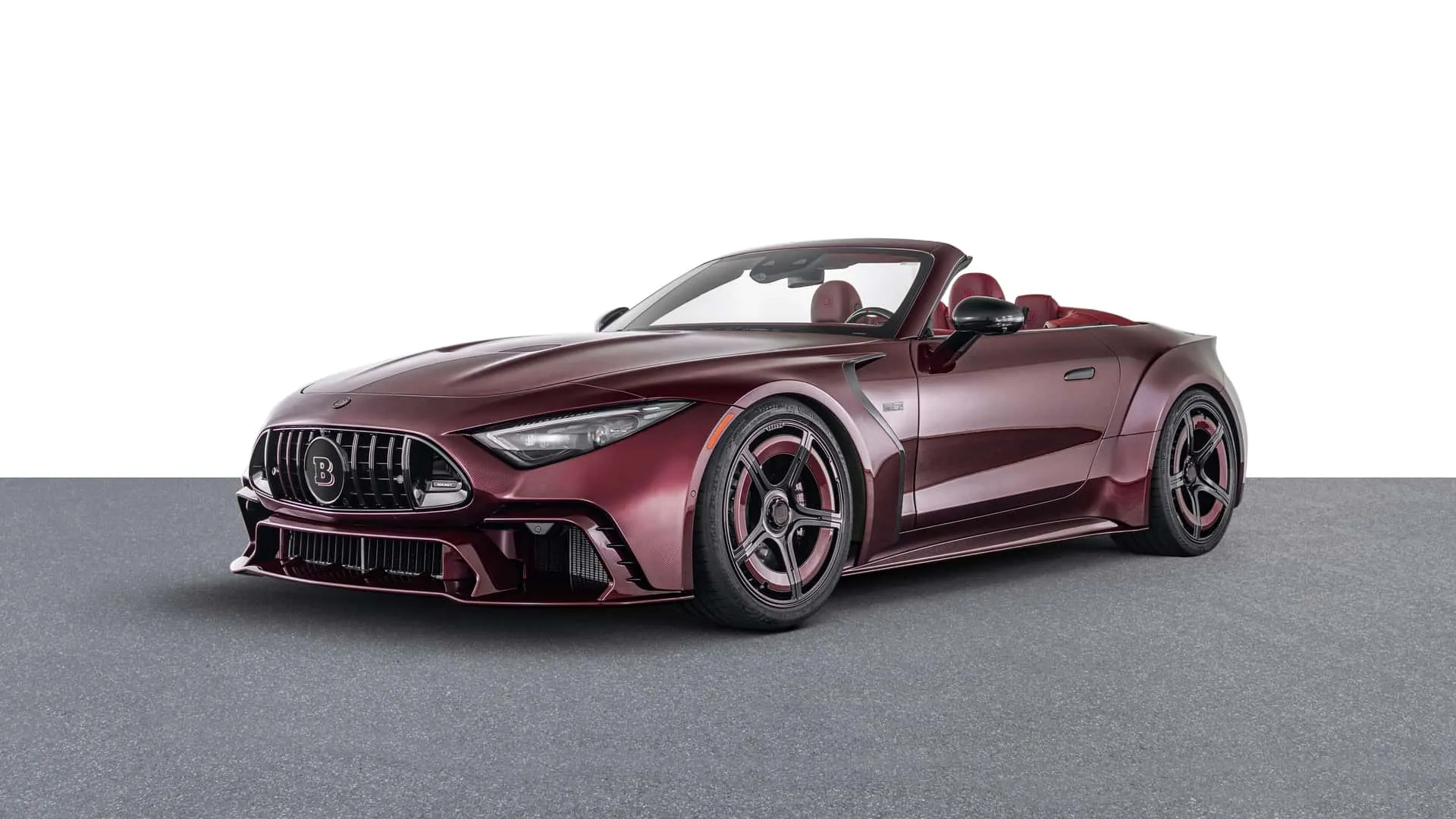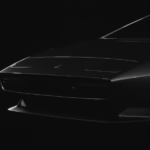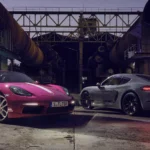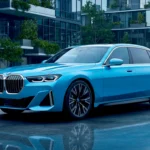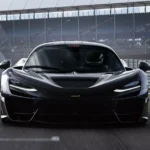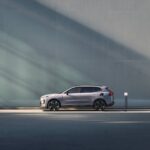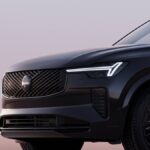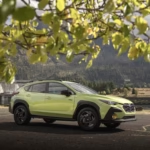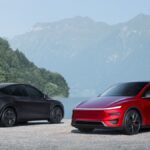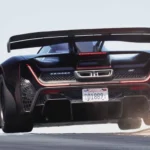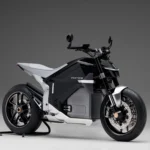Five years back, I was in a nondescript Irvine warehouse, staring at what looked like alien exoskeletons – lightweight lattice structures 3D-printed from metal powder, born from algorithms that dreamed up parts no human could’ve sketched. Kevin Czinger, the founder with that infectious mad-scientist grin, handed me one: “Feel that? It’s the future of speed.” Skeptical? Hell yes. But holding this featherweight marvel, I glimpsed something revolutionary – a hypercar not hammered from molds, but grown like a digital organism. Fast-forward to a foggy Sonoma morning in 2025, and I’m wedged into the production 21C, heart pounding as it snarls to life. This isn’t just a drive; it’s a front-row seat to Czinger’s Divergent revolution, where AI and additive manufacturing birth a 1,250-hp beast that’s as much lab rat as lap record chaser. Spoiler: It’s bonkers – and brilliant.
The Setup: From Divergent’s Billion-Dollar Bet to Blackbird Dreams
Czinger’s story is pure California alchemy – ex-F1 and SpaceX brains channeling $1 billion into the Adaptive Production System, spitting out parts for Bugatti, McLaren, even military drones. The 21C? Their halo: Just 80 coupes at $2 million a pop, with a Blackbird Edition quartet pushing 950 hp pure ICE. It’s “1+1” seating – driver dead-center, passenger offset – inspired by the SR-71 spy plane, slicing drag while framing the road like a cockpit canopy. At 205 inches long and 84 wide, it’s widebody low-slung, with carbon weave over a 3D-printed aluminum subframe that’s 40% lighter than castings.
Under the hood? A 2.9L flat-plane crank V8, twin-turbo’d to 750 hp and 397 lb-ft, revving to 11K rpm like a caged demon. Add a crank MGU (200 hp regen) and dual front e-motors from a 4 kWh sill-split battery for all-wheel shove – total 1,250 hp, 692 lb-ft. Claims? 0-60 in 1.9 seconds, 0-124 in 4.8 – Ferrari F80 territory. Aero? 2,650 lbs downforce at 200 mph from a swan-neck wing and dive planes. Gearbox? Seven-speed single-clutch (Xtrac internals, in-house printed case) – smooth as a DCT, they swear. I climbed in via the gaping side door (double-length for drama), swinging onto the sill before dropping into the tub – less graceful than a Valkyrie, but hey, you’re in.
First Impressions: Controls That Click, A View That Stuns
The cockpit’s a minimalist fever dream – yoke wheel (top rim nips your sightline a tad), lozenge dash screen on a printed armature, and pedals woven from metal like jewelry. Modes? Street (EV priority), Sport (V8 soft-focus), Track (full hybrid fury), Track+ (25mm slam, stiffer everything). I skipped Street – who needs quiet in this? – and hit Track, thumbing off traction for later. Startup’s a busy idle, tight and eager, not the orchestral bellow of a Pagan i – more industrial snarl, like a jet spool-up.
Gearbox surprised: Single-clutch usually jerks like a learner driver, but this shifts crisp, with no lurch on downchanges thanks to the slipper. Steering’s quick – 12:1 ratio? – with heft that builds, feeling connected not twitchy. Brakes? By-wire, but pedal’s firm, progressive – racecar bite without ABS panic. Sonoma’s blind crests and kerbs loomed, but the view? Panoramic – wheelarches peripheral, road rushing at you like a single-seater. Giggle-worthy? Absolutely, but I feigned pro to match the team’s chill vibe.
On Track: Ballistic, Balanced, But Begging for Tweaks
Out onto Sonoma’s esses, Track mode unleashes the V8 – a rising wail to redline, e-motors filling gaps for seamless surge. Punchy? Understatement – it’s a slingshot, 0-60 vanishing in a blink, but the front e-axle (torque vectoring promised) feels binary, spiking understeer mid-corner if you mash throttle early. I backed off, letting the rears lead – planted, communicative, with pushrod suspension (ZF dampers) ironing bumps while the printed rockers transmit every ripple. Aero kicks at 80 mph – that wing and splitter glue it, turning high-speed sweeps into velvet rails.
Switch to Track+: Slam 25mm, stiffen, and it transforms – hunkered, razor-edged, but the throttle map nags: Tip-in’s sharp, demanding feather-light inputs or risk snap oversteer. Sonoma’s off-camber kinks caught me once, rear stepping out before I danced it back – thrilling, but the front’s power bias corrupts the line, snatching wide on load. Czinger admits tuning’s ongoing; dialing front torque down could unlock purity. Brakes? Phenomenal – progressive fade-free stops, splitter scraping kerbs with a satisfying ‘skrrsh’ that had me grinning like a kid.
Final laps sans aids? Heart-in-mouth stuff – the 21C’s vivid, immersive, demanding rhythm over reflex. V8 peaks post-8K rpm, gearbox snaps, chassis conquers heaves like Chaparral sorcery. It’s not Valkyrie’s feather-light poise, but a hunkered destroyer – alien, yes, but addictively American.
The Verdict: Czinger’s 21C – Too Good to Be True? Nah, It’s Tomorrow
Czinger’s no flash-in-pan; it’s Divergent’s billion-dollar proof – AI dreaming parts, printers birthing subframes, ex-aerospace minds forging a hypercar that’s 40% lighter, infinitely iterable. The 21C? A lap assassin (Sonoma PB incoming), but its soul’s in the story: Californian grit echoing Jim Hall’s Chaparral, sans rules. At $2M for 80 units, it’s exclusive – but that central perch, woven pedals, and unfiltered rush? Worth every zero.
Quibbles? Throttle needs finesse, front bias taming – but that’s beta; the Blackbird’s 950-hp ICE-only ups the ante. This isn’t “another hypercar”; it’s a paradigm shift – mechanical yet futuristic, raw yet refined. Normal rules? They don’t apply here. I’d trade a kidney for laps – who’s in?
Your hypercar holy grail – Czinger or Koenigsegg? Spill below, and if printed wonders whet you, check our Rimac Nevera drift fest. Full send!
